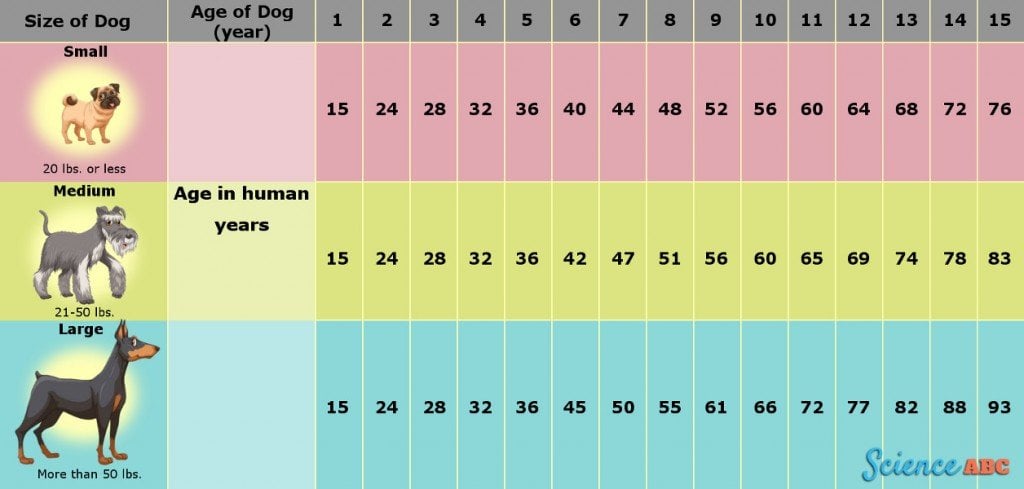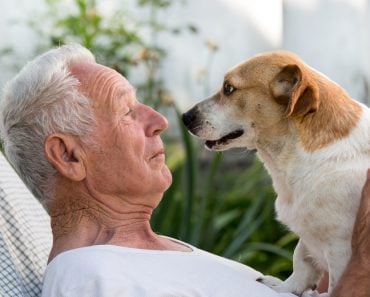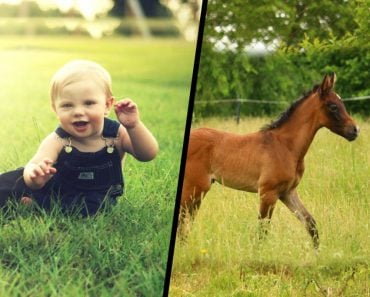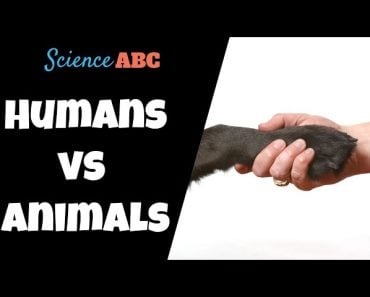Table of Contents (click to expand)
The statement “one dog year is equal to seven human years” is a myth. Dogs become sexually mature just after the first time they wear their birthday hat, whereas humans don’t reach maturity until the age of 13 or 14.
The statement one dog year is equal to seven human years has become gospel. However, if you were to pick up your one-year-old furry friend and compare him to a 7-year-old child, you’d be surprised to discover very little correspondence whatsoever. Dogs become sexually mature just after the first time they wear their birthday hat, whereas humans don’t reach maturity until the age of 13 or 14.
This seven-year myth is reminiscent of a pantheon of similar incorrect statements proliferated by charlatans, such as the body replaces itself every seven years or humans evolved from monkeys. The statements aren’t entirely incorrect, but they are unjustly simplified. Other than the dogma about our evolution from primates, whose truth can be found here, the claims involving numbers (strangely enough, they are usually either 3 or 7) are almost always misleading.
Recommended Video for you:
Early Guesses
Our compulsion to arrive at such a relationship between our rate of aging and a dogs’ is quite thoughtful. A dog or any other animal’s age isn’t exclusively calculated to understand when it will embrace death, but rather because it gives us an approximate measure of when we must become more aware of their health. A pet surpassing a precise age reminds us of the imminent joint pains, susceptibility to diseases and other aging problems that we must look out for.

The very first guess at animal ages was found in an inscription at Westminster Abbey from the 13th century, which dictated the ratio to be 9 to 1. This implied that an 81-year-old would be about the same (health-wise) as a 9-year-old dog. The grounds for the claim are still unclear; the life expectancy during the 13th century was around 32 (keep in mind that this is an average, another convenient concept to purge ourselves of uncertainty), so does that mean dogs only lived for 3 years? How was the determination made? The line seems to be drawn arbitrarily.
A second guess was made by French naturalist Georges Buffon, who claimed that humans lived between 90-100 years and dogs between 10-12, which roughly boils down to a ratio of 7 to 1. However, Buffon never explicitly advocated this ratio; in fact, no one knows when the rampant stream of culture swept this lie along, as well as so many others.
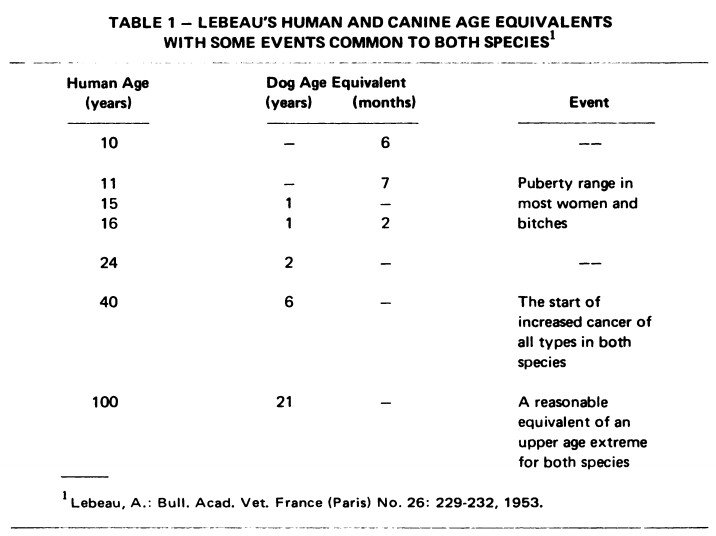
French researcher A. Lebeau was the first one to renounce the rule. He made a more nuanced version of the rule based on empirical evidence and concluded that a dog ages 15-20 times faster than a human during its first year, whereas that factor plummets to 4-5 times after its second birthday.
He concluded that a one-year-old dog corresponds to a 15-year-old teenager, while a 2-year-old dog becomes old enough to legally drink. After the second birthday, the relationship roughly assumes a 4:1 ratio. So, there seems to be no definite factor.
Different Breeds Age At Different Rates
Bluey, an Australian Cattle Dog is the oldest dog ever verified. It lived for 29 years, which corresponds to 203 years of a human lifespan. The oldest human we know of died at 122. The complexity introduced by mix breeding and nurturing techniques, including diet and dental care, renders absolutely no coherent relationship between a dog and a human’s age.

This uncertainty is exacerbated when we realize that different breeds of dogs age at different rates. A difference in weight and size is a key determinant of a dog’s age; apparently, smaller dogs tend to outlive larger dogs. As the ages vary, the relationship becomes more and more distorted. Furthermore, the label “small” and “big” aren’t helpful either; they seem to be ambiguous.
Now, a more data-driven approach has led to a consensus that small dogs weigh less than 20 pounds (Chihuahuas) and live between 15-20 years, medium dogs weigh between 21 and 50 pounds (Bulldogs) and live between 11-14 years, and lastly, large dogs weigh more than 50 pounds (Great Danes) and live between 6-8 years.
The truth is, we don’t have a clear idea about how dogs age. In fact, chronological aging and biological aging are quite different processes when talking about humans as well. Senescence is a highly complex process spurred by the accumulation of both predictable and random biological processes. However, humans deplore uncertainty, which compelled us to package the haphazard concept of aging in a simplified, appealing formula.
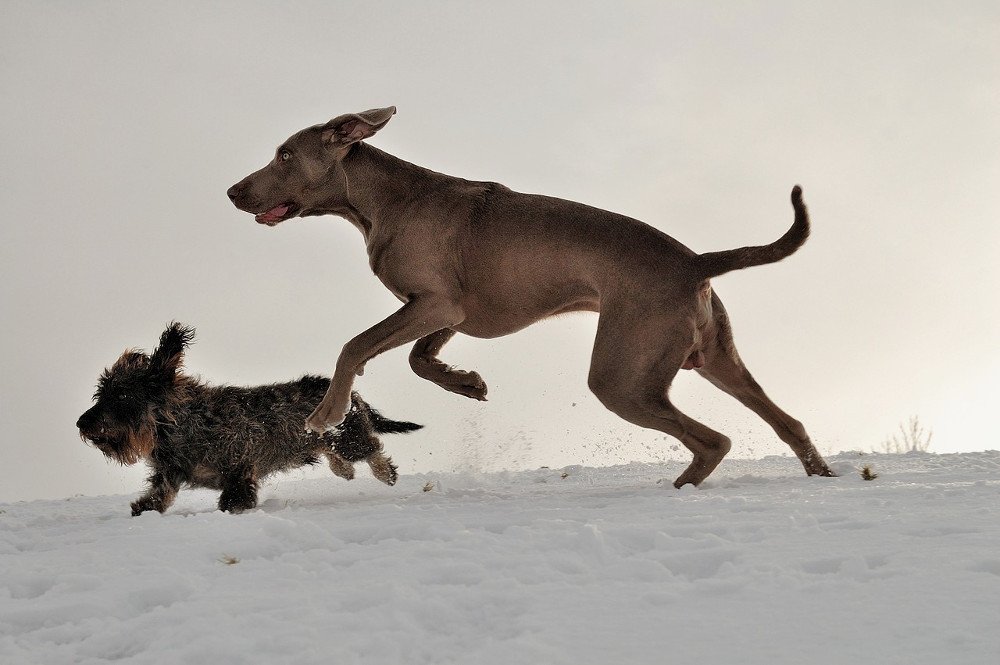
Why do we still use the rule? Well, because it’s convenient. However, William Fortney, a vet at Kansas State University, went as far as to deem it expedient. He says, “My guess is it was a marketing ploy.” He believes that “It was a way to encourage owners to bring in their pets at least once a year.”
Checking teeth is known to be a reliable and independent way to determine a dog’s age. At an age of 8 weeks, all the baby teeth are in, but as the dog ages through subsequent weeks, its teeth wear, attract plaque, become dull and finally fall out. One could also just visit websites that are solely dedicated to calculating your dog’s age. All it needs is the appropriate details, such as the breed, weight and size. Click on the button and voila! Also, in case you’re just curious about your age in dog years, here’s a table that can give you a ruff estimate.